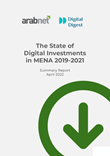MEF Identifies 10 Key Mobile Trends for 2014
Back
MEF looks ahead to 2014 and predicts ten key mobile trends that will shape the mobile industry in the coming twelve months. MEF is the global community for mobile content and commerce. It is the leading trade body for companies wishing to engage consumers and monetize their goods, services and digital products via the mobile connected device. It recently released its third annual Global Mobile Consumer Survey which studies mobile user behaviour from 10,000 respondents in thirteen countries.
1. The dawn of Mobile 3.0
In its global mobile consumer survey, a fall in purchase volumes of digital content was identified for the first time. The percentage of mobile media users that engage in such an activity fell from 54% in 2012 to 42% in 2013. The report termed this behavior Mobile 3.0. Currently, mobile users have become more selective when it comes to downloading and using apps. Additionally, they are now more focused on what the report calls super apps that drive this behavior. Think of Netflix, Spotify, Yalla Music, or local music streaming service Anghami, these two subscription based services replace hundreds of individual purchases. Finally, the survey also noticed that higher value items will be purchased via the mobile device with users migrating their spending on big ticket items from online and the high street to mobile. High spend threshold grew to 39% in 2013, up 8% from 2012, on items over $151, and that trend is set to continue over the coming year.
2. The conversation will move from big data to smart data
Big data is the term for a collection of data sets so large and complex that it becomes difficult to process using on-hand database management tools or traditional data processing applications (Source: Wikipedia). 2014 will be the year when mainstream users will adopt advanced data analytics to create accurate, actionable insights that drive mobile content and commerce services and support fast, iterative product development in the quest to achieve maximum user engagement.
3. Second screening, not dual screening
In light of the proliferation of mobile devices, many predicted that they would slowly cannibalize TV viewing. That didn’t happen, and instead they enhanced traditional media viewing. In developed market broadcasters will embrace second screening by offering tailored companion content, targeted advertising and direct opportunities to purchase from-ad-to-phone. In growth markets, the opportunity of second phone ownership will prevail. 49% of consumers in developed markets US, UK and China along with 42% of consumers in Latin America watch TV while using mobile media. In Asia this drops to 24%, but 51% of Indonesians use two phones.
4. Trust as a critical asset
The survey also found out that 35% of mobile users have never engaged in a single purchase from their phone. It also identified that trust was the key barrier in this regard, and that the issue is getting worse. The percentage of mobile media users that cite trust as an impediment rose from 27% in 2011, to 35% in 2012 and 40% 2013. Despite revelations on commercial tracking and compromise of consumer privacy, regulators and the public will be reassured by robust industry self-regulatory initiatives and the trend for trust to be the biggest single barrier to purchase growth on mobile will reverse for the first time in three years. Apps and brands demonstrating data transparency and best practice will differentiate themselves as ‘Trusted Apps’.
5. Wearable technology will create new ecosystems
Wearable sensor technology will support the new entry of major brand verticals into the market. 2014 will see the development of new ecosystems and mobile partnerships in wearables and will help accelerate mobile-led services such as m-health, insurance and personal safety. Google Glass, while still not a mainstream product, currently has around 70 apps, from cooking, to adult entertainment, to solar panel installment aid. Galaxy Gear has made it debut with mixed results, and we are reminded every now and then of Apple’s imminent foray into wearable. Locally, Instabeat raised $56K+ on Indiegogo - of a 35K goal - and has been reviewed on Techcrunch, Mashable, and Gizmodo.
6. Growth market device vendors will challenge
The market share of leaders Apple and Samsung will stay strong but decline, as device vendors from China and India - such as Xiaomi and Micromax - take an increasingly significant share worldwide. Among the new entrants, Chinese manufacturer Oppo has been on a steady rise. It recently paired with Cyanogenmod to release the Oppo N1. Russia’s own quirky smartphone also went on sale earlier this month.
7. Major financial players will assert themselves in the mobile arena
Cross-border mobile money services, for payments and remittances, will start to show substantial traction for the first time in 2014. In order to combat fraud, Visa, MasterCard and AmEx confirmed they are working on a radical shake-up of online payments systems that would ‘tokenise’ transactions. The process will do away with the need to enter card details and every transaction will be made with the behind-the-scenes exchange of a unique token that is valueless to any criminal. Meanwhile, companies such as MPayMe, Zapper and Paddle are experimenting with new checkout systems. For example, after a purchase has been made, a barcode is generated, which when snapped by a supporting app, processes the payment instantly. Locally, Payfort introduced an innovative online payment service for both banked and non-banked online shoppers, designed for cross-border traits.
8. Mass-adoption of education and m-health apps will be driven by mobile-first markets
A 'mobile-first' country means that many users have their mobile phones as their first window to the web. According to the 13 country study, in 2013, 26% of educational app usage was from India, followed by 25% in South Africa and 20% in Kenya. In, 2014 African mobile start-ups focused on these areas will secure venture investments exceeding $100M for the first time. In Lebanon, Hotel-Dieu de France became the first local hospital to release a mobile app. Beirut based online medical Q&A platform eTobb exited beta with the launch of its web app - design to adapt to phones and tablets - and plans on regional expansion.
9. The internet of things becomes a reality
Driven by Open Standards, 2014 will see the emergence of a flourishing ecosystem for the wireless internet of things mostly controlled by the consumer through the mobile device including automotive and home automation. Internet Protocol version 6 , or IPv6, steers clear of the problem of IPv4 address exhaustion - the 4.3 billion IPv4 addresses are running out. But we’re still a long way from mainstream adoption. As of September 2013, the percentage of users reaching Google services over IPv6 surpassed 2% for the first time. By 2020 there will be 50 billion Internet enabled devices in the world - that’s more than six connected devices per person, based on an expected global population of 7.6 billion people.
10. Operators actively reclaim the consumer relationship
Operators have been turning into utility companies despite their best efforts. 2014 will see operators launch new products & services around communications, payments & identity and partner with disrupters to establish greater consumer choice and value.
“MEF’s third annual Global Consumer Survey indicates with real clarity that we are heading into a new phase - Mobile 3.0 - and our annual predictions for the industry reveal the power of evolution in existing ecosystems and the creation of exciting new ecosystems involving new brands and verticals.” - Andrew Bud, MEF Global Chair
Latest Business
Intelligence Report













